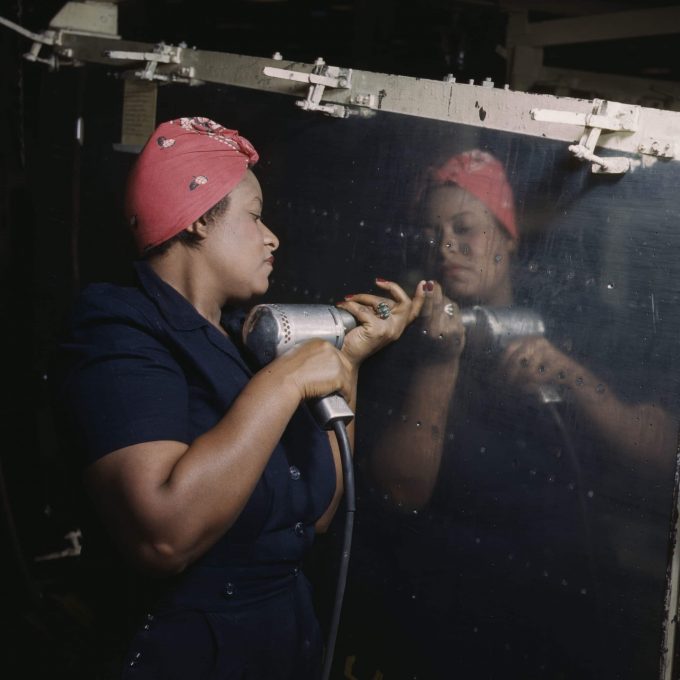How To Promote Workplace Gender Equity

March 2021 marks the 34th nationally recognized Women’s History Month, created to recognize the accomplishments and work of women throughout history who are often undermined or ignored in larger discussions. In modern society, women generally find themselves having to work much harder to be seen as equal to their male counterparts. Nowhere is this more apparent than the workplace, where women are still fighting for equity to this day.
With it being Women’s History Month, now is the perfect time to reflect on how your company treats its female employees, and how to develop a more equitable, inclusive workplace. But how does one untangle sexism from their workplace in a way that does not simply pay lip service? With an understanding of the history, biases, and challenges women face, a comprehensive plan can be formulated to create discrimination-free work environments.
The History of Women in the Workplace

To understand how much progress is still needed for women in the workplace, it is important to know the history of working women, and the issues they overcame. As far back as the late 1700’s, women were in workplaces across the country, yet were usually prevented from retaining their wages or taking certain, more prestigious career paths.
Many see World War I & II as the true turning points for women in the workplace. Both events had women entering the workforce in droves to help the war effort, filling in for millions of men who were drafted to fight. The “wave of [female] employment experienced in WW2 … was enough to alter the working dynamic going forward even if women were encouraged – and in some cases legislated – to return to their place in the kitchen at the end of the war.”
With experience in the workforce and the newly enacted right to vote, many women were invigorated to keep their jobs and demand stronger rights. Now, nearly a century later, women have made great advancements for equity, being represented in the highest echelons of business and government; in Fortune 500 companies, the Supreme Court, and – with Kamala Harris – the White House.
Despite these numerous achievements, women are years away from workplace equity, and still constantly face issues of harassment, payment inequality, and unequal representation. With the context of what women have already fought for, it makes current inequalities even more unacceptable.
Modern Issues in the Workplace

Most women have reported being mistaken for junior employees, having their expertise and experience questioned by superiors and co-workers. This is emblematic of the multitude of issues women face at work, being seen and treated as lesser to their male counterparts. To learn how to break cycles of sexism in the workplace, it is essential that women’s issues be fully understood and acknowledged.
The Gender Pay Gap
One of the most infamous gender issues of the last few decades, the gender pay gap has become a primary point of discussion in workplaces across the country. On average, women make $0.81 for every dollar a man makes. While a $0.19 difference in income might not seem like much, this difference balloons when viewed through a macro lens. One study found that women on average could be paid nearly a half million dollars less than their male counterparts over the course of a 40-year career. These statistics are even less favorable towards women of color, who on average earn significantly less than their white co-workers – sometimes as low as $0.75 per dollar a man makes.
For a company, it is easy to guarantee equal pay, but making sure it happens is another story. It is because of this that employees must be allowed to publicly discuss payment amongst themselves without fear of retribution. Equal pay can never be had if employees cannot compare how much they make, and it is the responsibility of companies everywhere to create environments where this is allowed. This must also be performed in tandem with commitments toward discrimination-free payment methods, embracing company-wide transparency.
Women in Leadership Positions
A main reason women’s concerns and genuine grievances are undermined and ignored is that there are very few women in leadership positions in most companies. Women are very present in supporting functions like human resources and administration, however are largely underrepresented in chief and senior positions. In North America, 37% of managers are women, for senior managers its 29%, and only 23% of executives positions are held by women
It is clear that women are often excluded from leadership positions, restricting them from advocating for equal pay, paid family leave, and fair hiring procedures from a managerial perspective. To remedy this, companies must make a conscious effort to hire women for leadership and decision making positions. Doing so not only gives women workplace equity, but also adds tremendous value to the company.
As author Marci Martin states, “Women can help others set goals and attain them, emphasize teamwork, and invest time in training, mentoring and personal development.” Diversifying those in positions of power lets companies better understand differing perspectives, and plan for the future with far more efficiency.
Harassment
For many decades, harassment was downplayed and swept under the rug in workplaces across the country. For instance, it took until 1986 for workplace sexual harassment to even be considered illegal. Even with legal protections against workplace harassment, millions of women still experience some form of sexual harassment at work every year.
8 out of 10 women have experienced harassment in the workplace, yet 72% of workplace sexual harassment occurrences are not reported, and the reason becomes clear when analyzing the assailants. The vast majority of workplace harassers – almost three quarters – are men in senior positions. Many harassment survivors worry that if they come forward, they will not be believed, or they will experience some form of retaliation, be it demotion or termination.
While most companies have some form of sexual harassment policy, these are quickly becoming archaic and are in desperate need of reform. Companies everywhere must analyze their approach to harassment of all kinds, and find solutions to give their employees the ability to speak up without fear of punishment.
The Future is Female

Much like the rest of the world, women are wondering how their careers and livelihoods will be affected by the COVID-19 pandemic. Already, a majority of jobs lost were held by women, and the effects of Covid could have long-lasting ramifications, undoing decades of progress. With the looming threat of regression hanging overhead, now is the time to demand equity for women in the workplace.
Women’s History Month is a great time to stop and reflect on how your company treats its female employees. However, those reflections must manifest into long-term, structural change from within. To uproot gender discrimination from the workplace is to rethink all steps of employee interaction: hiring, payment, promotions, leadership positions. This will be a difficult task, but with education and actionable goals, it can be achieved with great success.
At Impactree, it is our goal to help companies be their best selves, providing resources and simple actions which make a real difference in the world. For Women’s History Month, we suggest you check out our Gender Equity Action Hub to get ideas on how your company, customers and employees can collectively fight for women’s rights in and out of the workplace.

